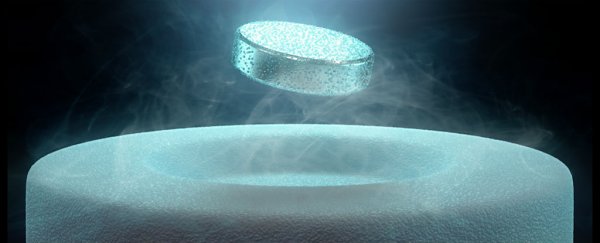For decades, physicists have been trying to achieve superconductivity - the ability to carry an electric current with 100 percent efficiency - at room temperature, because it would change how we use electricity forever.
And now, for the first time, researchers have confirmed that a strange new phase of matter occurs in the fleeting moment between the non-superconducting to superconducting state, and it could be the key to understanding how superconductivity works at high temperatures.
"A peculiar property of all these high-temperature superconductors is that just before they enter the superconducting state, they invariably first enter the pseudogap state, whose origins are equally, if not more, mysterious than the superconducting state itself," says one of the team, David Hsieh from Caltech.
Superconductivity was discovered back in 1911, and it was originally assumed that it could only occur at close to absolute zero (around -273 degrees Celsius).
Since then, scientists have achieved sustained superconductivity at slightly-less-chilly temperatures of around -70 degrees Celsius, but that's still not exactly practical - the cost of keeping superconducting materials consistently cooled generally outweighs the benefit of zero-resistance energy.
But if you could achieve the same effect at room temperature, or close to it - referred to as high-temperature superconductivity - it could revolutionise everything from our electronics to our transport, giving us the ability to build super-fast, frictionless transport systems such as maglev trains and the Hyperloop.
Thirty years ago, physicists discovered that high-temperature conductivity is possible, and in 2014, a US team was actually able to achieve it - but they could only maintain it for a split second.
At the time, they suspected this strange new pseudogap state was messing with the material's ability to achieve superconductivity at high temperatures, but exactly how it formed, or if it really was a new state of matter, remained unclear.
"[W]e have clear, smoking-gun evidence that the pseudogap phase competes with and suppresses superconductivity," said one of the team, Makoto Hashimoto from Stanford University, at the time.
"If we can somehow remove this competition, or handle it better, we may be able to raise the operating temperatures of these superconductors."
Now a team from Caltech has taken things one step further by confirming that we really are dealing with a distinct state of matter - and it has properties that are entirely different from those displayed in a superconducting state.
Imagine the pseudogap like a separate state of matter that sits between liquid and gas when you heat water to become steam, or when you melt solid ice into liquid water.
To change states like that, the electrons in the water have to rearrange themselves to form a liquid, solid, or gas. The same thing occurs in superconductive materials at certain temperatures.
The difference here is that the electrons arrange themselves into three different patterns during the transition between non-superconducting and superconducting states.
The researchers were able to study electron ordering in the pseudogap by developing a new laser-based method called nonlinear optical rotational anisotropy, which allowed them to detect any changes in symmetry during the phase transition.
Since different states of matter have distinct symmetries, if the symmetry of electron arrangements has been 'broken', it can be used as an indication of a change in state.
"We have discovered that in the pseudogap state, electrons form a highly unusual pattern that breaks nearly all of the symmetries of space," Hsieh explains.
"This provides a very compelling clue to the actual origin of the pseudogap state and could lead to a new understanding of how high-temperature superconductors work."
Now that the researchers have this new state of matter nailed down, the next step is to figure out how this particular ordering of electrons could hinder - or maybe even induce - high-temperature superconductivity. Watch this space.
The research has been published in Nature Physics.
